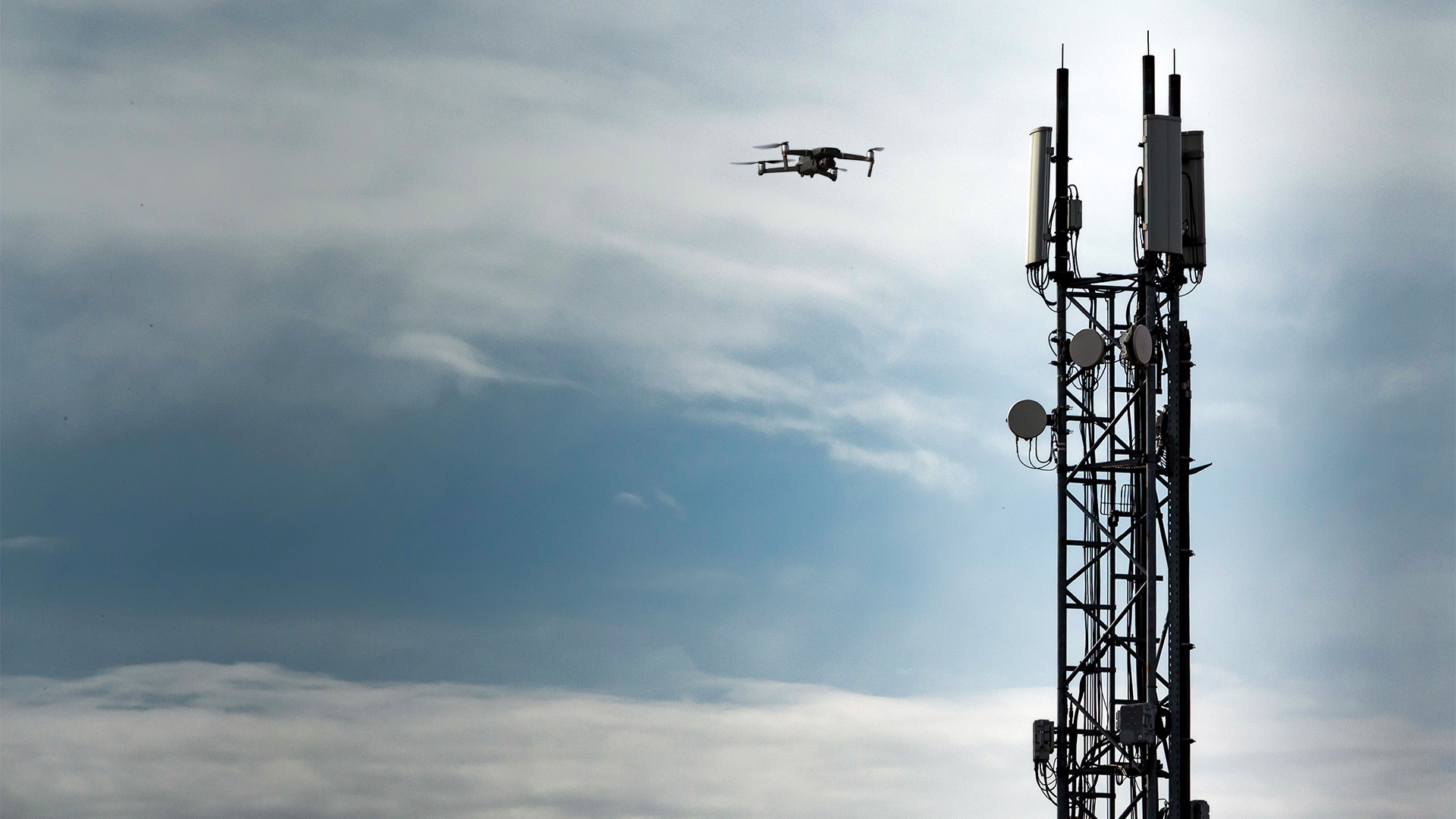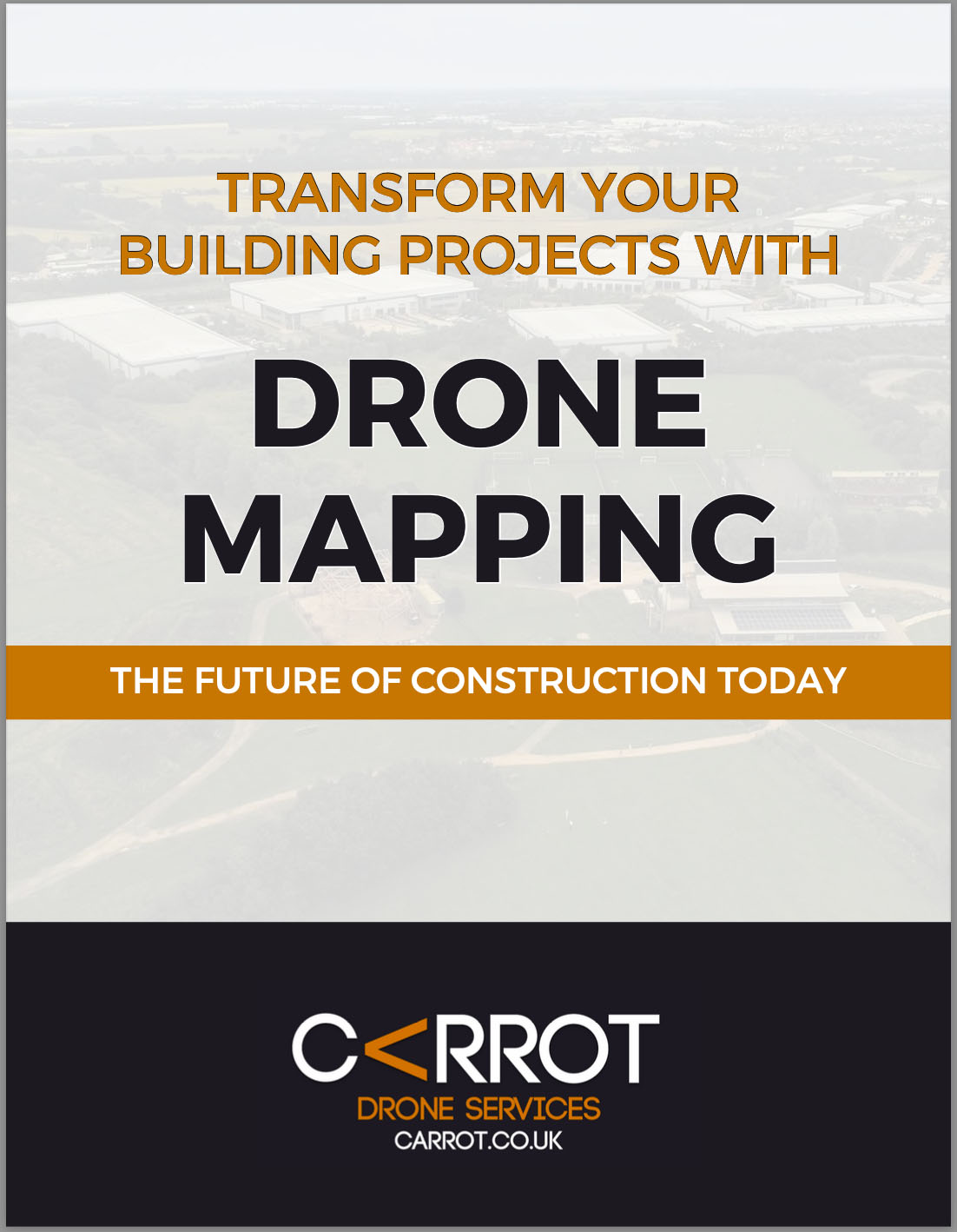Read Time 5 mins
06/11/2023

Introduction
The advent of aerial inspections signalled a pivotal shift in how industries approach the maintenance and surveillance of their assets. Traditional inspection methods have typically required manual labour, extensive scaffolding, and the use of heavy machinery – processes that are not only time-consuming and costly but also come with significant safety risks. In contrast, the emergence of drone technology presents a stark evolution, offering a safer, swifter and more cost-effective alternative. Drones, or unmanned aerial vehicles (UAVs), are now at the forefront of this revolution, transforming the landscape of industrial inspections. This technological leap is not just about replacing old methods; it's about redefining the possibilities of monitoring and maintaining critical infrastructure. As we navigate through the intricacies of drone-based inspections, we will uncover how these agile machines are not only complementing but often surpassing traditional inspection methods across various sectors.
Enhancing Efficiency
The deployment of drones in inspection tasks has markedly enhanced operational efficiency across numerous industries. By taking to the skies, drones eliminate the need for physical presence in difficult-to-reach areas, drastically reducing the time required to gather critical data. For instance, in the energy sector, drones can inspect vast solar farms in a matter of hours—a job that would previously take days if done manually. Similarly, in the realm of infrastructure, drones expedite the examination of bridges and buildings, identifying structural issues without disrupting traffic or business operations.
In agriculture, drones equipped with advanced sensors can rapidly scan crop fields, providing farmers with valuable insights into soil health and plant growth. This enables timely interventions, ensuring optimal crop yield. Furthermore, in the insurance industry, drones are used for rapid assessment of property damage post-natural disasters, streamlining the claims process and aiding in quicker payout to policyholders. These examples underscore how drones are not merely an alternative to traditional methods but a significant upgrade, redefining the essence of efficiency in inspections.
Improving Safety
The integration of drones into inspection protocols has significantly bolstered safety, particularly in environments where risk to human life is pronounced. Traditional inspection methods often put workers in precarious positions, climbing great heights or navigating dangerous terrain. Drones, however, can easily access these high-risk areas without endangering human life, thereby minimizing the potential for workplace accidents. For example, in the energy sector, drones can safely conduct routine inspections of power lines and wind turbines, which are typically located at daunting heights and were previously accessed by technicians using cranes or ropes.
In hazardous material storage facilities, drones can perform inspections without the risk of exposure to toxic chemicals or radiation. This not only ensures the well-being of the workforce but also complies with stringent health and safety regulations. Moreover, in the aftermath of disasters, drones provide a first look at affected areas, assessing damage without sending rescue workers into unstable structures or floodwaters. These applications vividly illustrate the invaluable role drones play in enhancing safety, exemplifying their indispensable contribution to modern inspection strategies.
Increasing Accuracy
The precision of drone-based inspections marks a substantial advancement in data accuracy, a critical component in maintenance and repair decision-making. Equipped with high-resolution cameras and sensors, drones can capture detailed images and generate accurate readings that might be beyond human capability. This enhanced data fidelity is particularly valuable in industries where minute details can signal significant issues. For instance, drones can detect hairline fractures in pipeline networks or wind turbine blades, faults that are nearly invisible to the naked eye but can lead to catastrophic failures if unchecked.
Additionally, the ability of drones to cover large areas rapidly means that inspections can be conducted more frequently, leading to up-to-date and comprehensive datasets. In the context of urban planning and construction, drones provide precise topographical surveys that inform better design decisions. This level of accuracy not only bolsters the integrity of structures but also optimizes resource allocation, ensuring that repairs and maintenance are conducted exactly where needed. By providing precise and reliable data, drones empower businesses to make informed decisions, enhancing both operational effectiveness and strategic planning.
Industry Applications
The versatility of drones has enabled their adoption across a wide range of industries, each with unique challenges and requirements. In the energy sector, drones are revolutionizing inspections of oil and gas pipelines, solar panels, and wind turbines. They provide a non-intrusive means to monitor vast energy grids and renewable energy farms, ensuring the uninterrupted supply of power while identifying maintenance needs early to prevent outages.
In the realm of infrastructure, drones play a pivotal role in the assessment and maintenance of critical assets such as bridges, roads, and buildings. They facilitate the structural analysis of these assets, providing engineers with the data needed to make informed decisions about repairs and safety measures. Drones can quickly survey construction sites, offering real-time insights that help in keeping projects on schedule and within budget.
The insurance industry also reaps the benefits of drone technology, particularly in the wake of natural disasters. Drones expedite the damage assessment process, enabling faster claims processing and assisting in disaster management and recovery efforts. By providing aerial views of affected areas, drones help insurers accurately evaluate claims and policyholders to receive timely assistance.
These examples only scratch the surface of the potential applications of drones in inspections. As technology continues to advance, the scope of drone use is expected to expand further, solidifying their role as an indispensable tool in industry-wide inspections.
Future Trends
The trajectory of drone technology suggests a future where inspections are not only automated but also predictive. Advancements in artificial intelligence (AI) and machine learning are expected to equip drones with advanced analytics capabilities, enabling them to identify potential issues before they manifest. This predictive maintenance could revolutionize asset management, saving industries substantial costs in unplanned downtimes.
Furthermore, the integration of Internet of Things (IoT) technology means drones could continuously feed inspection data into a network of connected devices, allowing for real-time monitoring and more dynamic decision-making. The rise of 5G connectivity will enhance this capability, reducing latency and increasing the volume and speed at which data is transmitted, thus refining the accuracy of inspections even further.
Another anticipated development is the increased autonomy of drone operations. Future drones will likely be able to conduct inspections with minimal to no human intervention, navigating pre-set routes with obstacle avoidance technologies. This will not only streamline the inspection process but also open up new possibilities for regular monitoring of inaccessible or remote areas.
As regulatory frameworks evolve to keep pace with technological advancements, we can expect drones to become more prevalent in urban environments, conducting inspections on public infrastructure, and contributing to smarter city initiatives. The future of aerial inspections with drones is poised to be characterized by greater efficiency, enhanced safety, and unparalleled accuracy, cementing the role of UAVs in the inspection domain for years to come.
Conclusion
The dawn of drone technology in the field of inspections marks a significant turning point in industry practices. With the ability to enhance efficiency, improve safety, and increase accuracy, drones offer a multitude of advantages over traditional methods. As we have seen, these benefits are already being realized in the energy, infrastructure, and insurance sectors, among others. Looking ahead, the integration of AI, IoT, and increased autonomy promises to drive further innovation in inspection techniques.
The implications of these advancements are profound, leading to smarter asset management, reduced risks, and more informed decision-making. While the regulatory landscape continues to develop, the potential for drones to support and sustain growth within these industries is undeniable. In essence, drone technology is not just shaping the present—it is paving the way for a smarter, safer, and more efficient future in aerial inspections.
Contact Information
For a deeper exploration into how Carrot Drone Services can elevate the efficiency, safety, and accuracy of your inspections through our cutting-edge drone technology, please reach out to us. Our team is ready to discuss the vast possibilities and tailor a solution that fits your industry's unique needs. Connect with us directly through our website, and for quick access to our contact links, use the hashtag #contactcarrotphotography on social media platforms. We're here to help you harness the power of drone inspections and drive your business forward into the future.
